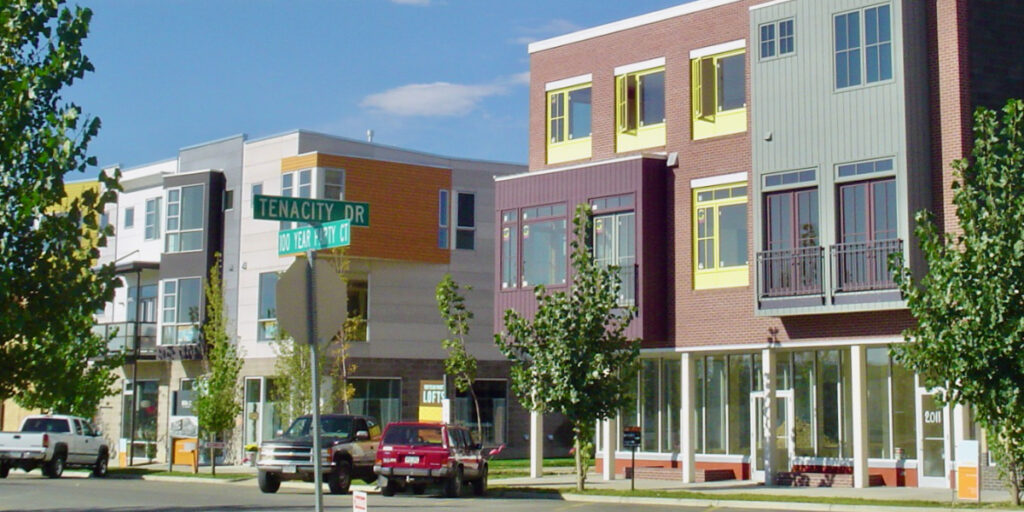Prospect New Town in Longmont, Colorado, has long been hailed as an innovative interpretation of New Urbanist design. Conceived as an antidote to conventional suburban sprawl, this neighborhood near Boulder combines diverse residential options, pedestrian-friendly streets, and a distinctive architectural flair that draws visitors from across the region. At the heart of Prospect’s success is the shared vision of its founder, the collaboration with forward-thinking planning professionals, and the city’s willingness to embrace a different kind of development model.
A significant catalyst for Prospect’s inception was developer Kiki Wallace, who inherited a family-owned tree farm on the parcel where the neighborhood now stands. Rather than selling the land for a typical housing subdivision, Wallace envisioned a community that would foster meaningful social interaction and walkable convenience. Seeking expertise to bring this idea to life, he partnered with Duany Plater-Zyberk & Company (DPZ)—the renowned planning firm spearheaded by Andrés Duany and Elizabeth Plater-Zyberk, both leading figures in the New Urbanism movement. Together, Wallace and DPZ crafted a master plan emphasizing human-scale design: narrow streets, a mix of housing styles, and a layout that encourages residents to mingle on porches, sidewalks, and shared green spaces.
From the beginning, Prospect required close coordination with Longmont’s city planners and officials to adapt existing zoning laws and establish infrastructure that would support this dense, mixed-use concept. Municipal leaders played a vital role in rethinking street widths, utility connections, and public services. Their collaboration with Wallace and DPZ set the groundwork for Prospect’s phased development, ensuring that each new residential block or commercial building aligned with the guiding principles of walkability and community-oriented design.
Today, Prospect’s charm is immediately evident in its visually eclectic streetscapes. Contemporary steel-and-glass structures stand alongside homes featuring Victorian flourishes, while bright paint colors and whimsical details add a layer of artistic flair. This diversity is purposeful: the development team wanted to avoid the repetition that so often characterizes suburban neighborhoods. As a result, single-family homes, lofts, townhouses, and live-work units blend seamlessly, attracting a broad demographic—young professionals, families, empty-nesters, and retirees, all looking for a more dynamic living experience.
The heart of any thriving neighborhood lies in its local businesses, and Prospect is no exception. A newer standout is Babettes Pizza & Pane, which specializes in artisan bread and wood-fired pizzas. The carefully crafted dough and inventive toppings have quickly made it a neighborhood favorite, inviting residents to linger over a slice or a freshly baked loaf. Another popular spot is Urban Thai, serving traditional and contemporary Thai dishes in a relaxed setting. Whether you’re craving a classic pad thai or a bold curry, Urban Thai has become a go-to choice for dine-in meals and takeout alike. For those seeking a quick breakfast, brunch, or coffee break, Big Daddy Bagels offers fresh bagels, sandwiches, and a laid-back atmosphere that fits Prospect’s communal ethos. These eateries not only provide diverse culinary options but also act as social anchors, where neighbors bump into each other and visitors catch a real glimpse of local life.
This cluster of locally owned eateries contributes to the convivial spirit that defines Prospect New Town. Instead of driving to big-box centers on the outskirts of town, residents can stroll to their favorite café or restaurant, bumping into friends, coworkers, or fellow parents along the way. Throughout the year, planned events such as block parties, art walks, and small-scale festivals further weave Prospect’s social fabric, attracting attendees from across Longmont, Colorado.
Hospitality is another factor that gives the neighborhood its sense of place. The walkable design and human-scaled streets make it easy for visitors to immerse themselves in Prospect’s atmosphere, checking out local shops and chatting with residents who are eager to share what makes the area so special. In many ways, Prospect functions like a small town within a larger city.
As Prospect continues to mature, new projects and businesses regularly appear, guided by the principles laid out in the original master plan. The city of Longmont remains a key partner, balancing Prospect’s desire to maintain its artistic, eclectic vibe with practical considerations around growth and infrastructure. Through this ongoing dialogue, the neighborhood retains its status as a vibrant, sustainable community that values connection over isolation, and character over uniformity.
By blending architectural variety, pedestrian accessibility, and a lively culinary scene, Prospect New Town in Longmont, Colorado has effectively redefined how a suburban development can look and feel. It stands as a testament to what can happen when visionary developers, innovative planners, and supportive municipal leaders come together to put people at the forefront of community design.
